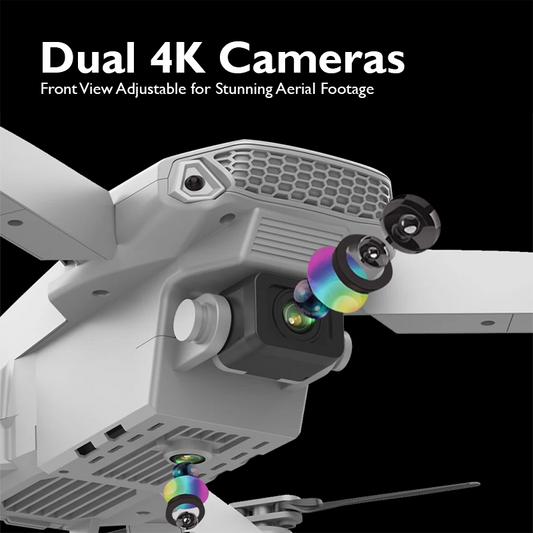Urban Planning with Drones: Smart City Development

In the dynamic landscape of urban development, the integration of cutting-edge technologies has become imperative to meet the growing demands of modern societies. One such revolutionary tool making waves in urban planning is the use of drones. These unmanned aerial vehicles are not just gadgets for hobbyists or tools for capturing breathtaking aerial views; they are transforming the way cities are planned and developed. In this article, we will explore how drones are playing a pivotal role in smart city development, revolutionizing traditional urban planning methodologies.
Understanding Smart City Development:

Before delving into the impact of drones on urban planning, it's essential to comprehend the concept of smart city development. A smart city leverages technology and data to enhance the quality of life for its residents, optimize resource utilization, and improve overall efficiency. Key components of a smart city include advanced communication infrastructure, sustainable energy solutions, efficient transportation systems, and innovative urban planning.
The Role of Drones in Urban Planning:

Drones, also known as Unmanned Aerial Vehicles (UAVs), have emerged as powerful tools for collecting data and providing valuable insights for urban planners. Here's how they are reshaping the field of urban planning:
1.Aerial Surveys and Mapping:
- Drones equipped with high-resolution cameras and LiDAR sensors can capture detailed aerial imagery of urban areas. This data is invaluable for creating accurate 3D maps, identifying topographical variations, and assessing the existing infrastructure. Urban planners can use this information to make informed decisions about land use, zoning, and the placement of essential facilities.
2.Traffic Management:
- In congested urban areas, efficient traffic management is a constant challenge. Drones can monitor traffic patterns, identify bottlenecks, and suggest optimized routes based on real-time data. This not only reduces congestion but also enhances public safety and minimizes the environmental impact of transportation.
3.Infrastructure Inspection:
- Traditional methods of inspecting infrastructure, such as bridges and buildings, are often time-consuming and costly. Drones equipped with cameras and sensors can perform routine inspections with precision and speed. This not only ensures the safety of the structures but also minimizes downtime during maintenance activities.
4.Environmental Monitoring:
- Smart city development emphasizes sustainability and environmental conservation. Drones can be employed to monitor air quality, assess green spaces, and identify areas prone to pollution. This data aids in the development of green infrastructure and promotes eco-friendly urban planning practices.
Benefits of Using Drones in Urban Planning:

The adoption of drones in urban planning brings forth a myriad of benefits that contribute to the development of smarter, more sustainable cities:
1.Cost Efficiency:
- Traditional surveying methods involve significant costs in terms of manpower, equipment, and time. Drones offer a cost-effective alternative by reducing the resources required for data collection and analysis. This cost efficiency allows urban planners to allocate resources more effectively towards other crucial aspects of development.
2.Time Savings:
- The speed at which drones can collect data is unparalleled. What might take weeks using traditional methods can be accomplished in a matter of days or even hours with drones. This time-saving aspect is crucial in fast-paced urban development projects where timely decisions are imperative.
3.Enhanced Accuracy:
- Drones equipped with advanced sensors ensure high-precision data collection. This accuracy is essential for making informed decisions in urban planning, whether it's determining the optimal location for a new infrastructure project or assessing the impact of existing structures on the environment.
4.Accessibility to Remote Areas:
- Urban planning is not limited to city centers; it extends to the outskirts and remote areas. Drones provide accessibility to such regions, allowing planners to gather data from diverse landscapes and ensure holistic development that considers the entire urban ecosystem.
5.Data Visualization:
- The visual data captured by drones is instrumental in creating detailed, interactive 3D models of urban areas. These models aid urban planners in visualizing the proposed changes, making it easier to communicate ideas with stakeholders and the public. This fosters transparency and community engagement in the planning process.
6.Challenges and Considerations:

While drones offer tremendous potential in urban planning, it's crucial to address the challenges and ethical considerations associated with their use:
7.Privacy Concerns:
- The extensive data collection capabilities of drones raise concerns about privacy infringement. Striking a balance between utilizing drone technology for planning purposes and respecting individual privacy rights is a challenge that urban planners must navigate.
8.Regulatory Frameworks:
- The integration of drones into urban planning requires clear regulatory frameworks to ensure safe and responsible usage. Governments and regulatory bodies need to establish guidelines regarding airspace management, data storage, and privacy protection.
9.Data Security:
- The sensitive nature of urban planning data necessitates robust security measures. Ensuring the protection of data from unauthorized access and cyber threats is paramount to maintaining the integrity of the planning process.
10.Community Engagement:
- While drones facilitate better visualization of proposed changes, ensuring community engagement in the planning process is essential. Addressing concerns, obtaining feedback, and incorporating community input are critical for successful and inclusive smart city development.
In conclusion, the integration of drones into urban planning processes is a game-changer for smart city development. The benefits of cost efficiency, time savings, enhanced accuracy, and improved accessibility to remote areas make drones indispensable tools for urban planners. However, it is crucial to navigate challenges such as privacy concerns, regulatory frameworks, and data security to ensure responsible and ethical use of this technology.
As cities continue to evolve and face the challenges of rapid urbanization, leveraging the capabilities of drones in urban planning becomes increasingly vital. The synergy between technology and urban development is propelling us towards a future where cities are not just smart but also sustainable, resilient, and inclusive. The era of urban planning with drones is here, ushering in a new age of innovation and efficiency in shaping the cities of tomorrow.
Explore a variety of drones at our online drone store.
Happy Flying!











